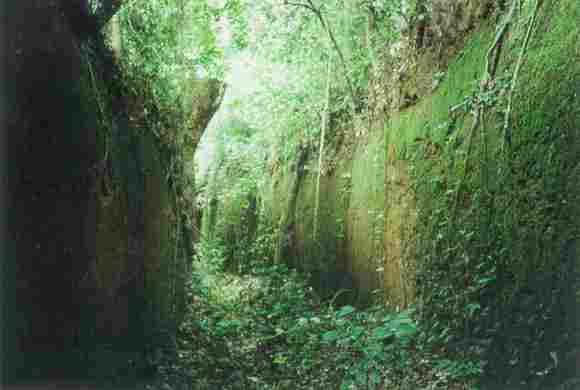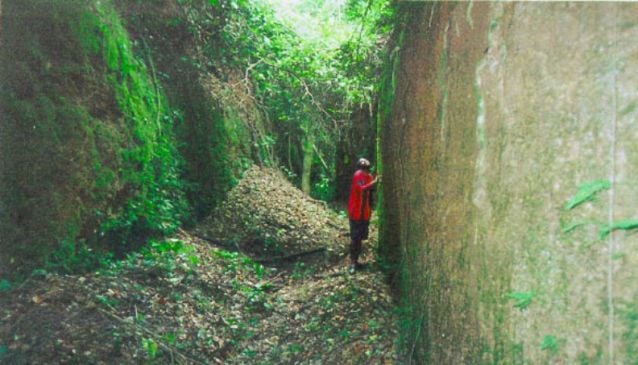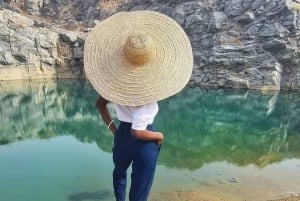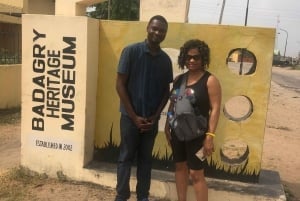Sungbo's Eredo a must see in Nigeria
Built as far back as 800-1000 AD to honor the Ijebu noblewoman Oloye Bilikisu Sungbo
Book Top Experiences and Tours in Nigeria:
If youʻre booking your trip to Nigeria last minute, we have you covered. Below are some of the top tours and experiences!- Abuja: Explore Ushafa Crush Rock with lunch
- 7 Days NIGERIA - South West Tour
- Lagos, Nigeria Int'l Airport: Concierge/transfer services
- Abuja: Discovery Museum Tour with Hotel Pickup
- Ekiti: Ikogosi Warm Springs 3-Day Adventure with Transfers
"Sungbo's Eredo is a rampart or system of walls and ditches that is located to the south-west of the Yoruba town of Ijebu-Ode in Ogun state, southwest . It was built in honour of the Ijebu noblewoman Oloye Bilikisu Sungbo" - Wikipedia
If you ever wanted to something different to do while in Lagos, then you could take a 2 or so hours drive to the villiage of Sungbo, where you can visit the ancient site of Sungbo's Eredo in Epe.
Built as far back as 800-1000 AD to honor the Ijebu noblewoman Oloye Bilikisu Sungbo, the structure has since been abandoned however its remains lie amist the forest waiting to tell its historic tale.
It is proposed that the Eredo was built as a fortification used as a defense mechanism. It is more than 160 kilometres 40 kilometers wide and has ditches that are around 20 meters deep. The structure coincides with legends of the Queen of Sheba and it was thought to have been built as a personal memorial to her. It now however stands, slowly crumbling in its ancient beauty, overtaken by the forest which has grown to overlay the cracks, crevasses and ditches.

The moat which can be as much as 20 meteres deep with moss covered walls on either side, can be quite alarming to behold. Guests can roam these once protective corridors, climb over fallen trees. This ruin is largely unkept and taken over by nature so dont be surpised to find yourself admist a very rich forest eco system with giant millipedes and bats that slumber within the dark halls.

Archeologists and historians have been studying Eredo now for some time, often implying that the site along with the Eredo can prove to be greater than even the famous Egyptian Pyramids. It is belived that this Eredo was built by thousands who were most likely slaves with the use of only basic tools and education between 800 and 1000 AD.
Scientists believe that the creation of this site required approximately a million more hours than was necessary to build the pyramids. Some scientists even believe that the Eredo was not just a fortress but a city, and if true that would make it one of the biggest cities in ancient times.
Part of what has been uncovered by archeologists so far is a three-story structure that has been identified as a type of palace that once held royalty. Inside were found the remains of living quarters, courtyards and shrines. It is still not completely certain, but there are hypotheses amongst scholars that there are other important buildings and parts of the structure hidden around the dense forest within the area.
As archeologists wander the site and try to make sense of its existence they typically keep in mind the local myths that surround it. Apparently erected in honor of the queen, Bilikisu Sungbo, who was a widow with no children and believed to also be the Queen of Sheba by some.
The noble woman Sungboâs grave is located near the sight of the Eredo, inspiring pilgrimages by locals to the site each year. Other shrines have also been erected near Eredo and locals often visit them to leave offerings. Women are also knonw to visit the ruins to pray that they will have an easy time conceiving children and that their children will be protected. Muslims have also been known to visit the site after Ramadan and Christians too after Easter.

Sungbo's Eredo is currently, not paid much attention by the state or federal governments in Nigerian, as such the site gets limited funding that help preserve its historical and archeological significance to the regoin. UNESCO however, with its status and with the help of British and Nigerian Archeologists, the site is slowly being cared for.
Tourists today both local and international in are encouraged to visit this controversial and mysterious ancient site, which offers a chance to go on a real adventure in time, into a place many locals in Nigeria are still truely aware of.
At My Destnation we think that a visit to Sungbo's Eredo is a great thing to do while in Nigeria, and we highly recommend you add it to your bucket list of things to do, when looking for tourist attractons to see in Lagos.
Feel free to contact us at My Guide for information and advice on visiting this tourist attraction in Nigeria













